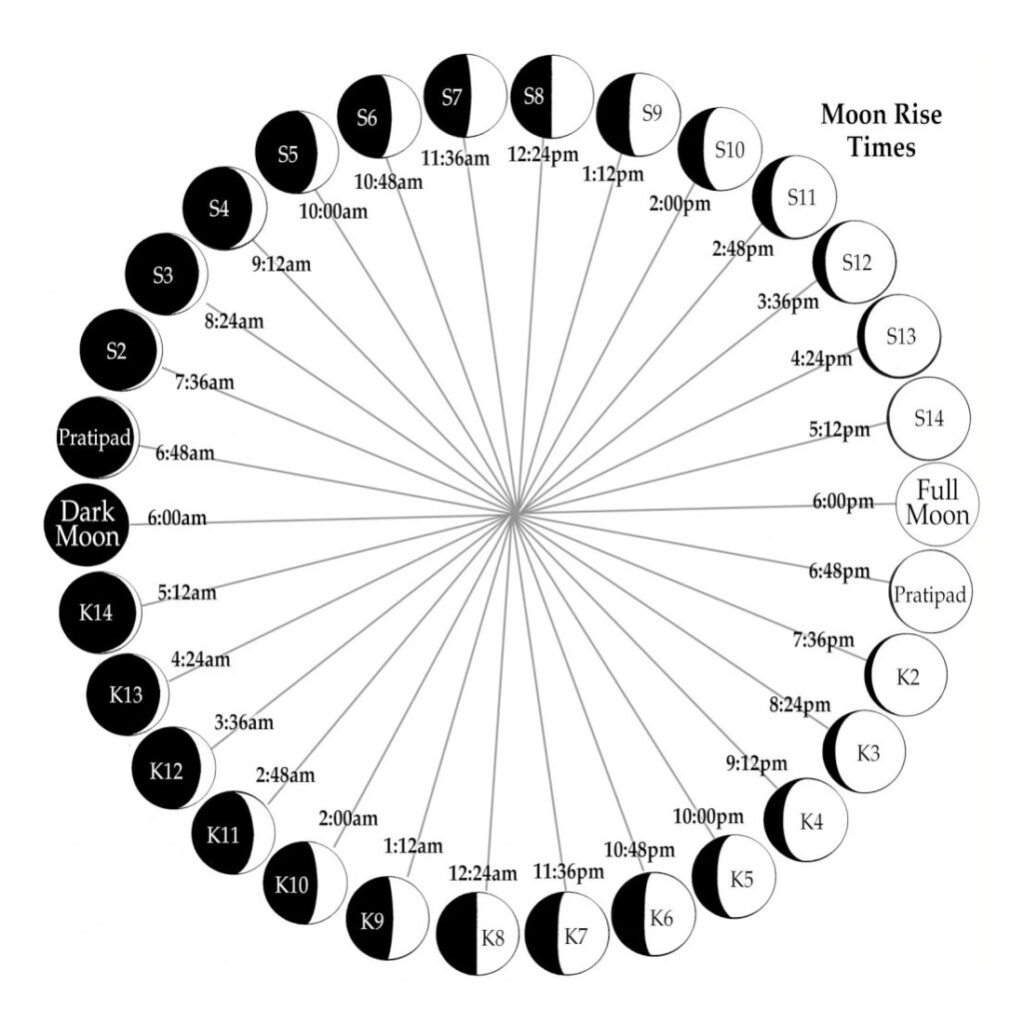The moon, a celestial body that has fascinated humanity for millennia, plays a crucial role in various cultural, spiritual, and scientific realms. Among its many attributes, the waxing and waning phases of the moon hold significant importance in numerous traditions, particularly in Hinduism. This article explores the meanings, symbolism, and implications of the waxing and waning moon, highlighting its impact on human behavior, agriculture, and spirituality.
Understanding Lunar Phases
The moon goes through a regular cycle of phases, commonly categorized into four primary stages: the new moon (Amavasya), the waxing moon (Shukla Paksha), the full moon (Purnima), and the waning moon (Krishna Paksha). Each phase represents a different relationship between the Earth, moon, and sun, creating a variety of visual appearances and energies.
New Moon (Amavasya): This phase marks the beginning of the lunar month, when the moon is not visible from Earth. In many cultures, this is considered a time for reflection, setting intentions, and beginning new ventures.
Waxing Moon (Shukla Paksha): Following the new moon, the moon starts to illuminate gradually, signifying growth and abundance. This phase lasts until the full moon and is often associated with positive energy and opportunities.
Full Moon (Purnima): The full moon is a time of peak illumination and energy. It is celebrated in various cultures and is often linked to fertility, completion, and heightened emotions.
Waning Moon (Krishna Paksha): After the full moon, the moon begins to wane, symbolizing reflection, release, and preparation for new beginnings. This phase is often seen as a time to let go of what no longer serves us.

Waxing Moon: The Time of Growth and Abundance
The waxing moon, or Shukla Paksha, lasts from the new moon to the full moon. This phase is often viewed as a time of growth, renewal, and positive energy. The increasing light of the moon is associated with several significant themes and practices:
Symbolism of Growth: The waxing moon represents a time when energies are rising. Just as plants grow towards the light, individuals are encouraged to embark on new projects, pursue goals, and initiate changes in their lives. The energy during this phase is conducive to starting new ventures, whether in business, relationships, or personal development.
Spiritual Practices: Many spiritual traditions, including Hinduism, emphasize the importance of rituals and practices during the waxing moon. Devotees often engage in pujas (worship), meditation, and other spiritual activities. This phase is considered ideal for connecting with higher energies, seeking blessings, and enhancing one’s spiritual journey.
Festivals and Observances: Various festivals coincide with the waxing moon. For instance, *Navaratri, a nine-night festival dedicated to Goddess Durga, begins on the new moon and extends into the waxing phase. Similarly, **Maha Shivaratri*, which celebrates the union of Lord Shiva and Shakti, falls during the waxing moon and emphasizes devotion and spiritual growth.
Agricultural Significance: Traditionally, the waxing moon is considered an auspicious time for agricultural activities. Farmers often plan their planting and harvesting according to the lunar cycle, believing that crops planted during the waxing moon will yield better results due to the increasing lunar energy.

Waning Moon: A Time for Reflection and Release
The waning moon, or Krishna Paksha, begins after the full moon and lasts until the next new moon. This phase is often associated with introspection, letting go, and preparing for new beginnings. The diminishing light of the moon carries various meanings and implications:
Symbolism of Reflection: The waning moon encourages individuals to reflect on their actions, emotions, and experiences over the previous month. It is a time to evaluate what worked and what didn’t, allowing for a deeper understanding of oneself and one’s journey.
Letting Go : Just as the moon diminishes in light, the waning phase symbolizes the release of negativity, old habits, and anything that no longer serves one’s purpose. Many spiritual practices during this time focus on forgiveness, letting go, and purifying one’s life.
Pitru Paksha: A significant observance during the waning moon is *Pitru Paksha*, a 15-day period dedicated to honoring and remembering ancestors. Families perform rituals to pay respect and offer gratitude to their departed loved ones. It is believed that during this time, the spirits of ancestors are more accessible, and offering prayers and food can help in their journey.
Karva Chauth: Another important observance is *Karva Chauth*, a festival celebrated by married women who fast for the well-being and longevity of their husbands. The festival falls on the fourth day after the full moon and underscores the importance of devotion and sacrifice.
Agricultural Practices: Similar to the waxing phase, the waning moon also has agricultural significance. Farmers often choose this time for weeding, pest control, and preparing soil, believing that the decreasing lunar energy helps in minimizing unwanted growth and enhancing soil quality.
Scientific revelations
Beyond cultural and spiritual interpretations, the moon’s phases have been studied scientifically for their effects on Earth and its inhabitants. The gravitational pull of the moon influences tides, animal behaviors, and even human emotions.
Tidal Forces: The moon’s gravitational force is responsible for the tides in the oceans. During the full and new moons, when the Earth, moon, and sun align, the tides are at their highest (spring tides), affecting marine life and coastal ecosystems.
Animal Behavior: Various animal species exhibit behaviors that correspond with the lunar cycle. For instance, many sea turtles time their nesting according to the phases of the moon, while certain fish species are known to spawn during specific lunar phases.
Human Emotions : Some studies suggest a correlation between the lunar phases and human emotions or behaviors. While research is still ongoing, many people report feeling different energies or moods during various moon phases, often aligning with the waxing and waning cycles.
The waxing and waning moon are not just astronomical phenomena; they hold deep cultural, spiritual, and practical significance across various traditions. In Hinduism, the lunar phases guide rituals, agricultural practices, and personal reflections, enabling individuals to align with the natural rhythms of life. Whether viewed through a spiritual lens or a scientific perspective, the moon continues to inspire awe and reverence, reminding humanity of its connection to the cosmos and the cyclical nature of existence. As we navigate the waxing and waning phases, we are encouraged to embrace growth, reflection, and the timeless wisdom that the moon offers.







